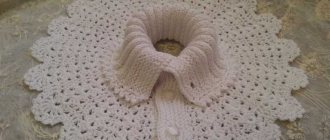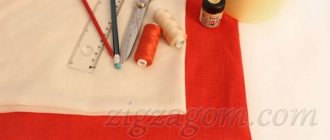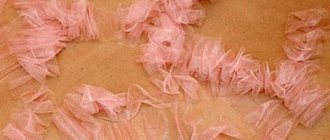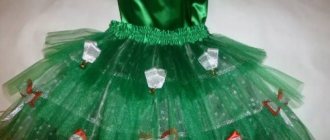What is jute?
Jute is a densely stemmed plant native to several continents. The fiber made from these stems is called similarly. It is often used in construction as an environmentally friendly insulation material.
This can also be the name given to a dense twisted thread made of fibers and a fabric made from these threads. Jute thread is widely known as ordinary twine, and jute fabric is used for sewing bags, bags and furniture upholstery.
Variety of jute crafts
Needlewomen all over the world cannot ignore such an attractive material, inventing more and more new jute crafts:
- decorative and functional pillows for home and garden;
- flat and voluminous wreaths for the door on the occasion of any holiday;
- rugs and paths;
- vases and candlesticks;
- bags;
- boxes, needle cases, tea boxes;
- bags for fragrant herbs.
Even walls are decorated with jute cloth (or burlap) instead of wallpaper. It looks very original.
Advantages of jute products
Souvenirs and practical products made from natural fibers are attractive for the following reasons:
- environmental safety (jute does not release harmful synthetic molecules into the air);
- durability, color and shape retention; Most often, jute thread and burlap are used undyed - its straw color remains unchanged;
- plasticity, ease of processing;
- low cost; burlap is much cheaper than linen and other natural fabrics.
Disadvantages of jute products
Jute, like any material, has disadvantages:
- if you work with the material for a long time, you can damage the skin of your hands, since jute is a coarse fiber; for the same reason there is no need to make bag handles from it;
- When using products, small particles of fiber may fall off, causing or exacerbating allergic reactions;
- many souvenir items standing in open places will accumulate a large amount of dust over time (and if in the kitchen, then soot); odors are also preserved;
- absorbs jute and moisture well, but dries after that for a long time and poorly;
- may be attractive to insects and bacteria.
Burlap panel in a marine theme
If you like to bring numerous shells, pebbles, and corals from vacation, then most likely all this wealth is stored in boxes or bags. However, both you and those who were with you during your trip or trip to the sea will be much more pleasant if the seafood is on public display, and even decorated appropriately in the form of a unique individual panel.
What you will need to make the panel:
A glue gun (if you don’t have one, a regular tube of glue will do), which will significantly speed up the process of making panels Scissors Knife Burlap Wooden board Twine (made of flax or jute) Thick paper (the size of the paper should correspond to the size of the board) Wooden sticks Wood cuts Moss (pieces )
Manufacturing process:
We cut out a piece of burlap, lay the fabric on the board and fold the fabric over the underside.
We crumple the paper a little. This will give it texture. After this, we glue the paper onto the front side of our craft. It's time to use sticks and twigs. We place them on the craft in random order, grouping them together. When the composition of sticks and twigs is firmly attached to the craft, place shells on top of it and glue them. To make sea waves, we will need pieces of twine or jute. We will imitate the sea surface by gluing a rope with waves. We cut pieces of twine or jute of equal size, twist them into rings and glue them along the edges of the panel. The finishing touch is to take the moss and glue it onto the panel, giving it the appearance of algae. The original decoration for your home or garden is ready.
Rag dolls
Once upon a time, our great-grandmothers played only with such dolls - simple, cloth, somewhat figurative. Do not assume that they have lost their relevance. And today, little girls are drawn to simple packages that represent both women and men.
Rag dolls usually have no face. But, oddly enough, this does not scare children. On the contrary, it gives room for imagination, because you can come up with different emotions for your favorite doll depending on the game scenario.
Do-it-yourself jute crafts, folded and tied with your own hands, are safe and durable. And if, as a result of active games with a rag doll, something irreparable happens, you can always make another one, exactly the same.
Simple crafts with jute patterns for beginners: photo frame with filigree pattern
The first work in the jute filigree technique is the design of a photo frame.
In order to make this jute product with your own hands, you will need:
- a small piece of stiff cardboard (you can use cardboard from a shoe box);
- a piece of paper of any dark color;
- wooden skewers;
- a small piece of wire, suitable in cross-section to the thickness of the skewer;
- jute twine;
- any beads for decoration;
- glue;
- tweezers;
- scissors, stationery knife.
A photo frame with an openwork filigree pattern will have a rectangular shape, rounded like an arch at the top. The external dimensions of the frame are height 13 cm, width 11 cm. The internal window for the photo is 7 cm wide and 9 cm high. The height of the upper part of the frame is 6 cm. We draw a drawing of the frame on cardboard and cut out the blank. This will be the basis for the openwork pattern. You can cover the blank with any colored paper. It must be kept in mind that an openwork pattern looks better on a dark background.
The width of the side openwork jute filigree pattern is 1.5 cm. We mark the scan and make a pattern. Place the drawing in a file folder.
When making this jute craft, you first need to work with the cardboard base.
We will decorate a cardboard frame covered with colored paper along the outer edge and inside the photo window with borders.
To do this, we wrap skewers coated with glue with jute twine. We do the same with a piece of wire. We cover the upper rounded edge of the frame with this flexible border.
Cutting the resulting borders to the required length, glue them directly to the ends of the frame. To cover the gluing area between the border and the cardboard frame, glue a piece of jute between them along the entire length, both on the front and back sides of the frame.
Using the jute filigree technique, we will make a pocket for a photo on the reverse side of this product. Glue the skewers, stepping back from the window 5-7 mm from the bottom and sides. We glue a piece of cardboard on top that is suitable in size so that the photo does not fall out of the pocket.
Let's move on to more interesting work - a set of openwork patterns made of jute. We remember that you need to cut the cord at an angle so that the cut ends of the elements do not puff up and stick together more tightly.
Let's start from the bottom of the frame and then move to the sides. First we make the large elements of the drawing. After they are glued, we will move on to a set of smaller elements.
Popular articles Mosquito repeller
Using a toothpick or the thin end of a skewer, spread the glue along the pattern line for the jute product.
Glue the curls to this place. We supplement large curls with loops and smaller curls according to the pattern. We make all the elements from separate pieces of jute, firmly glue them to each other, and press the gluing points with tweezers or a finger. If you have squeezed out a lot of glue, you can spread it over the surface of the design or remove it and spread it on jute twine to make it less shaggy. If the excess is not removed, the elements may creep and begin to bulge.
After a set of sides, we proceed to the jute pattern above the top. We start with the central small curls. Then we glue the arched crossbar between the curls.
While this part of the drawing for a DIY jute craft is drying, we begin to make large petals.
It's better to start from the center. We form each petal from two pieces of cord.
In the upper, pointed part of the element, use tweezers to press the ends of the rope against each other so that they stick together tightly and do not move apart.
While we were making the contours of the petals, the central part dried out, and its contours did not spread to the sides. We fill it according to the drawing with small elements in the form of loops.
Next we will continue working with large petals. We do the internal filling according to the drawing. Smaller petals are placed between the large petals.
When the set of designs for crafts made from jute twine is ready, we place it under the press so that later the design remains even and the elements are on the same level. Let it dry for three to four hours.
Then we remove the work from the film. All visible glue drips along the edges and between the elements are cut off with a stationery knife from the wrong side.
This is a painstaking but very important stage. Excess glue must be carefully removed so that the work looks neat and beautiful. We carefully inspect the cleaned work.
We apply it to the cardboard blank.
The openwork pattern does not fit closely to the cardboard, but is located slightly above the colored background of the frame. It sticks to the curbs. And this creates an even larger volume of openwork pattern.
And now you can decorate the openwork pattern with beads to your taste, as your imagination dictates.
Pillows
Making a pillowcase from jute fiber is very easy. For the base you will need a rectangular piece of burlap and a fastener. This could be a zipper or ribbons from which bows will be tied on the side.
You can decorate a pillow in different ways. The following options are popular:
- snow-white lace;
- ribbons;
- buttons;
- embroidery with threads and beads.
Rope filigree
Similar to precious metal filigree, jute filigree is the art of weaving and laying out various patterns with thread. Using this technique the following can be created:
- caskets and caskets;
- decorative decorations for curtains, walls, doors;
- bijouterie;
- carnival and themed masks;
- frames for photographs and paintings;
- vases, candy bowls, napkin holders, trays.
As well as small table souvenirs, Easter eggs, dolls, figurines of animals and birds.
In the footsteps of ancient masters
This technique appeared quite a long time ago. In ancient times, jewelry filigree was used. With its help, precious stones were decorated and beautiful jewelry was obtained. Instead of threads, wires made of precious metals were then used. This process is quite difficult, so today it can only be performed by qualified specialists.
The tools and supplies needed for the job are few. First of all, you need to purchase jute (jute twine), which is a thread made from natural flax. Jute is the main component of filigree. This thread can be purchased at any hardware store. It is grayish in color, but can be painted with acrylic paint in any shade. It is quite thick, as it is made up of several twisted fibers, and is a bit shaggy. If desired, you can purchase twines of different thicknesses. Basically, a twist of two threads is used. You will also need:
- toothpicks;
- scissors;
- stationery knife;
- tweezers;
- transparent glue (Titan type);
- tablet.
For beginners, pattern diagrams or stencils of jute filigree will be useful. The work will be much easier with them. Tweezers are also an important tool in filigree. It helps to twist, tuck or press down the twine material. Scissors must be sharp. They are used to make cuts.
Toothpicks are an optional tool, but they will help novice crafters distribute the glue correctly. A stationery knife is used to remove glue smudges. The tip of the knife will easily cut the glue between the elements. The board will also come in handy if you need to remove dried glue.
Basic elements of patterns
Taking a closer look at any, even the most complex product, you can identify simple elements in the pattern. Knowing them will help you lay out the pattern in stages, without getting tangled in unnecessarily long threads. The most popular elements are:
- ring and half ring;
- cucumber, pear and petal (they differ only in how the thread is bent at the edges);
- several petals nested one inside the other are called curl;
- a clove is simply a bend of the thread at the desired angle;
- head and wall - two options for curling the tip of the thread;
- if the thread is curled at both ends, it is already a double curl;
- several single curls in one bunch (in one direction) - grass, and in different directions - horns;
- the contours and edges of the pattern are decorated with either a straight thread or a snake;
- a thread twisted into a tight spiral is called grain.
If you form petals in simple rings, the resulting shapes are called gears and burrs.
Feather in jute filigree technique
To familiarize yourself with the technique, you can make small-sized crafts from jute. A master class on making a magic feather from an unknown bird is described below.
- Transfer the pattern to paper or print it.
- Place a piece of patterned paper in a file or transparent bag.
- Start the work with the feather shaft: coat its outline with glue and lay it out with thread.
- Apply glue to one element of the pattern, spreading it with a toothpick or knitting needle.
- Lay out the curl with jute thread, cut off the tip diagonally.
- Coat the next element and lay it out again with thread.
- When the entire pattern is laid out, the product can be secured with the same transparent glue, PVA glue solution or acrylic varnish.
- Leave to dry under the press, having previously placed a film between the press and the product.
- Once the feather has dried, all that remains is to separate it from the film and cut off the remaining glue. You can use scissors along the edges; for the inner areas, a stationery knife is more suitable.
How to make beautiful flowers from jute with your own hands
Jute flowers can decorate many interior items and clothing. Even a novice craftswoman can make them if you follow a detailed master class.
Jute for making floral ornaments
You need to prepare the following tools and materials:
- Super glue;
- jute of different shades;
- scissors;
- safety pins;
- pencil;
- office file;
- cardboard;
- compass;
- needle;
- ruler.
The simplest twine flowers
Features of making chamomile from jute:
- Using a compass, form a circle of the required diameter from cardboard. It is this parameter that will determine the size of the bud. Cut out the part.
- Using a ruler and a simple pencil, draw a cardboard circle according to the principle of a snowflake. It is necessary to carry out 6-8 diameters.
- Stick safety pins along the edge of the cardboard circle, along the outer diameter.
- At the point where the diameters intersect, use glue to glue the tip of the jute.
- Next, wrap each pin with thread, forming loops. It is necessary to alternately wind each pin 2-3 times.
- After finishing the winding, cut off the thread, leaving a tip 25-30 cm long.
- Thread the tip of the thread into the needle and sew loops through the middle of the flower. Grab bundles of thread in equal quantities and pull the needle through the middle of this ring. Tighten the knot.
- Glue the tip of the thread to the middle. This way, the complete product will be fixed.
- Carefully remove the needles and pull out the cardboard circle.
Note! All work is done on a stationery file so as not to stain the table surface. You can make a flower like this and decorate the middle of the product in an original way
Popular articles Cold and warm colors: floral arrangements
Place a few coffee beans in the center and sprinkle some with cereal. Other types of powder can be used. The main thing is that the material is natural
You can make a flower like this and decorate the middle of the product in an original way. Place a few coffee beans in the center and sprinkle some with cereal. Other types of powder can be used. The main thing is that the material is natural.
Flowers with a natural center
A flower can be made from the same materials by forming jute filigree. A figured flower is printed on a sheet of paper, which is then placed in a stationery file. After smearing the file with glue, use tweezers to lay the twine along the contour of the design. Additionally, all connections and intersections of threads must be additionally glued.
Filigree technique
Note! Flowers made from jute and burlap look even better. The materials are similar in texture and structure, so they fit together perfectly
Volumetric crafts made of jute filigree
The first idea for jute crafts in volume was a round box with a lid. To make it you will need:
- jute of natural color and bleached (any chlorine-containing bleach is suitable for this);
- wooden skewers for the frame;
- transparent glue;
- hand cream;
- scissors, awl, tweezers and needle;
- acrylic lacquer;
- cardboard for the bottom;
- template diagrams.
Rules for working with glue
Before making jute filigree, you need to coat a small section of the cord with glue, literally rub the glue into the surface of the rope until it stops sticking to your fingers. And immediately, while the rope is flexible and smooth, you need to start forming the element. It is not necessary to glue a large section of jute, as the glue may dry out and it will be more difficult to bend the twine. If the rope nevertheless hardens, you can coat this area with glue again and it will soften.
Glue makes a big difference in DIY jute filigree work. We use glue of the “Titan” type, which is universal, moisture-resistant, and transparent.
This glue glues the surface of the jute well and glues the elements together, dries quickly, easily spreads over the plastic film and is separated from it.
The glue helps the work retain its given shape well and gives it rigidity.
According to jute filigree technology, any product is made on a polyethylene plane. The drawing with the pattern is placed in a file folder, and only the elements of the drawing are glued to its surface.
The glue fits well on the plastic surface, spreads easily over it and is just as easily removed from the file without breaking the typed jute pattern.
Sequence of making a box
The box consists of a bottom, six sides and a lid.
- Lay out each side using the same pattern of simple elements. The finished side is rolled up over the bottle to give volume to the finished box and finally dries without a press, in a free state.
- Roll the bottom into a simple spiral, tightly arranging the rows of thread and gluing them onto the cardboard.
- Wrap wooden skewers in jute. Using an awl or needle, make six holes in the bottom at equal distances from each other.
- Stick skewers into the bottom.
- Glue together a tight ring of several rows of jute along the diameter of the bottom. Fix the upper ends of the skewers with it.
- Glue the side elements onto skewers one by one, changing their shape with a hairdryer if necessary.
- Similarly to the side fragments, make the lid of the box according to the diameter of the bottom.
- The box is ready.
Jars, vases
- Prepare jars or any other unnecessary small containers in advance. This could be a gel or shampoo bottle, a mayonnaise bucket, or other plastic and glass containers.
- Use a glue gun to apply the twine. This should be done in a circle of the selected container, starting from the bottom.
You can glue a piece of burlap to the bottom and lid. To do this, you need to measure and cut it in advance. Which option to choose is up to you.
Wrap the sides of the jar very tightly with jute so that there are no gaps between the threads.
You may be interested in: Crafts made from cement - beautiful and unusual garden design
Wind it all the way to the top of the can, cut the thread and glue it carefully.
Decorate the jar with the following materials as desired: lace, decorative flowers, beads, rhinestones or ribbons.
You should end up with a decorative vase like this. It will perfectly decorate any interior. We invite you to consider a few more ideas for creativity.











